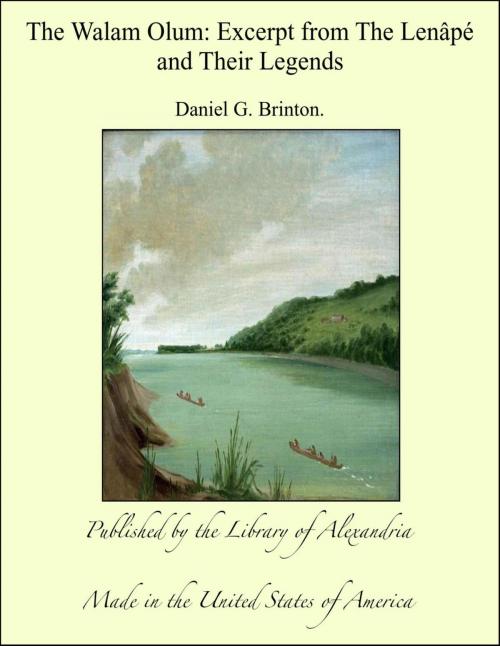The Walam Olum: Excerpt from The Lenâpé and Their Legends
Nonfiction, Religion & Spirituality, New Age, History, Fiction & Literature| Author: | Daniel G. Brinton | ISBN: | 9781465576927 |
| Publisher: | Library of Alexandria | Publication: | March 8, 2015 |
| Imprint: | Language: | English |
| Author: | Daniel G. Brinton |
| ISBN: | 9781465576927 |
| Publisher: | Library of Alexandria |
| Publication: | March 8, 2015 |
| Imprint: | |
| Language: | English |
This controversial work is purportedly a translation of a sequence of pictographs which give the epic of the Delawares, a tribe which lived in the central Eastern seaboard. Taken at face value, this would be one of the few actual written texts from Native North America, including a clear account of an eastward migration over the 'stone-hard water'. The source of the document, as well as aspects of the Delaware text, and some of the historical episodes have been called into question. I'm not going to rehash this discussion here, but offer some comments based on the content of the text. Most likely, the Walam Olum was forged in the 19th Century by someone who was attempting to provide a mythological underpinning for the theory that Native Americans migrated from Asia at some point in the recent past. It is now believed that this migration took place between ten and fifteen thousand years ago. Instead of a mass emigration over a frozen ocean, it was a gradual infiltration by small groups. They weren't out to discover a new world, but simply following their food sources. Initially they moved over a land bridge that connected Asia and America (Behringia), which was exposed at the time by the the greatly lowered Ice Age sea levels. When the glaciers contracted at the end of the Ice Age, the conventional theory is that a 'corridor' through western Canada was created, which served as a migration route south into North America. another theory is that people could have taken a sea route along the Canadian coast to bypass the ice sheets. In any case, the archeological record indicates that it took hundreds or thousands of years for people to get from Siberia to the shores of the Atlantic.
This controversial work is purportedly a translation of a sequence of pictographs which give the epic of the Delawares, a tribe which lived in the central Eastern seaboard. Taken at face value, this would be one of the few actual written texts from Native North America, including a clear account of an eastward migration over the 'stone-hard water'. The source of the document, as well as aspects of the Delaware text, and some of the historical episodes have been called into question. I'm not going to rehash this discussion here, but offer some comments based on the content of the text. Most likely, the Walam Olum was forged in the 19th Century by someone who was attempting to provide a mythological underpinning for the theory that Native Americans migrated from Asia at some point in the recent past. It is now believed that this migration took place between ten and fifteen thousand years ago. Instead of a mass emigration over a frozen ocean, it was a gradual infiltration by small groups. They weren't out to discover a new world, but simply following their food sources. Initially they moved over a land bridge that connected Asia and America (Behringia), which was exposed at the time by the the greatly lowered Ice Age sea levels. When the glaciers contracted at the end of the Ice Age, the conventional theory is that a 'corridor' through western Canada was created, which served as a migration route south into North America. another theory is that people could have taken a sea route along the Canadian coast to bypass the ice sheets. In any case, the archeological record indicates that it took hundreds or thousands of years for people to get from Siberia to the shores of the Atlantic.















